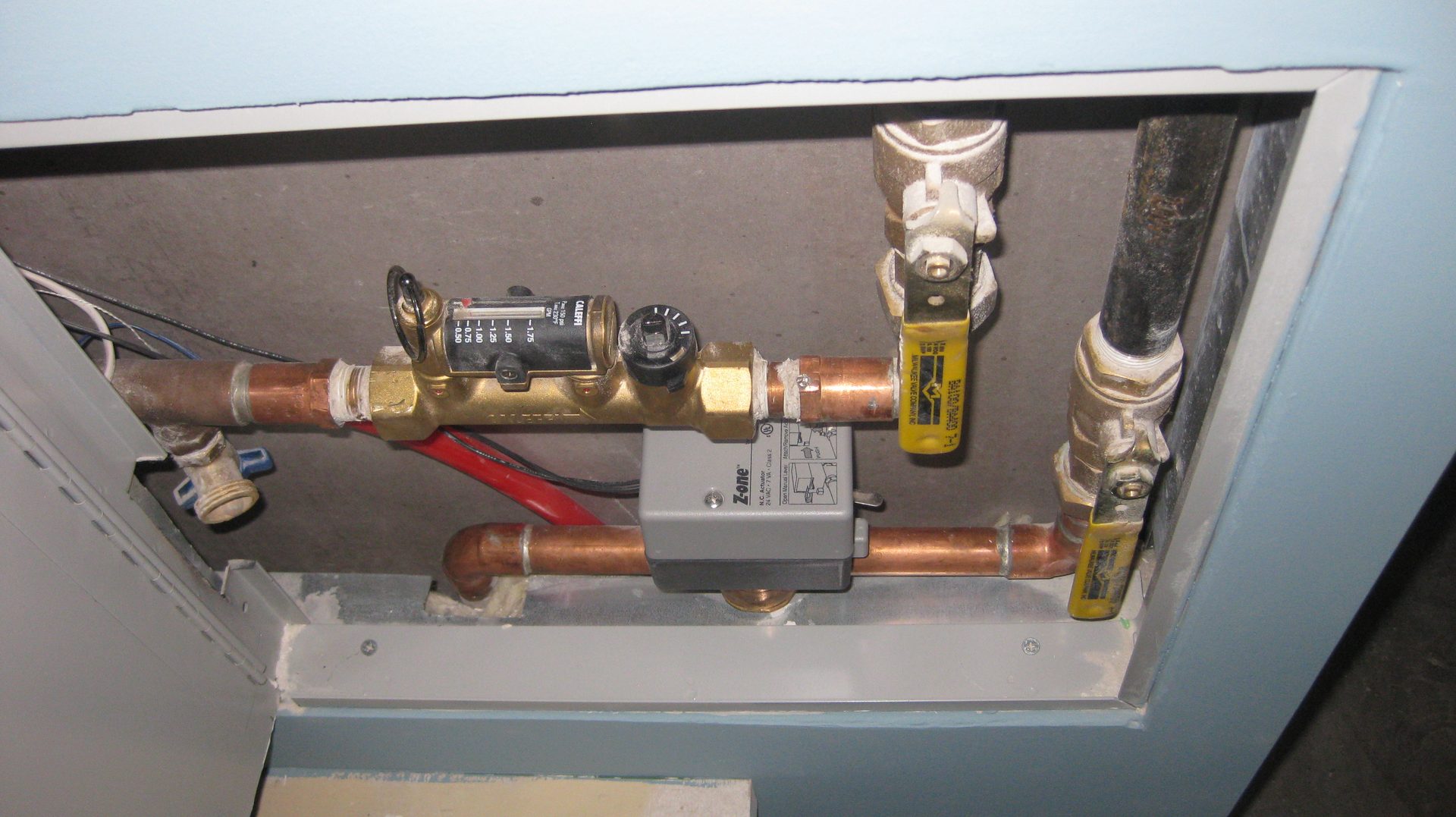Radiant retrofit transforms factory into luxury hotel
New York hotel combines modern radiant technology with a historical building.
By Max Rohr

The luxurious Wythe Hotel in Brooklyn, New York, was once a waterfront barrel and rope factory. This renovated structure now has 72 boutique guest rooms. As part of the update, it was important to retain the character of the original turn of the century building, which opened in 1901. In order to convert the cold, utilitarian factory space into comfortable rooms, a major mechanical update was required. By adding radiant floor heat, they were able to meet and exceed the comfort benchmark of a modern-day hotel while balancing for energy efficiency.
Rooms with exposed brick, large windows and original wood beam structural details convey a historical sense of what Brooklyn would have been like in 1901. At the time of original construction, timber framing and brick were the structural materials of choice before reinforced concrete gained popularity in Brooklyn. The original craftsmanship and durability of the building are part of the intrigue for a guest stay. However, guests do not prefer to shiver all night in a drafty hotel room. The very qualities that make the original Wythe Hotel building interesting and historic set up the mechanical community for a tough task to deliver comfort.

A supply and return wall access panel at the renovated Wythe Hotel.
One consideration for the hotel renovation was to install a full dropped ceiling and run bulky HVAC through the rooms to address the full sensible heating loads. Alternatively, they could have reduced the size of the windows and cut PTAC (packaged terminal air conditioner) units through the envelope. The path they chose instead was to install radiant floors, thus maintaining the original building construction and the essence of the Wythe’s charm.
Radiant is an excellent method to deliver safe thermal comfort because designers are able to avoid localized hot spots that may be present in a steam radiator system, for example. With a hotel, the opportunity to educate occupants with potential safety concerns inherent to steam systems that they should avoid bumping into the hot radiator is challenging.

The schematic above pictures a riser diagram for radiant zones. Image courtesy of Caleffi North America
Any 120-plus year old building is going to have quite a few structural components to work around and, maybe, a fuzzy set of as-built drawings. In new construction, maybe all the risers and laterals to the terminal units line up nicely and balancing isn’t a monumental task. In this type of historical renovation, the path from the mechanical room to the individual guest room may be an adventure. To prevent overheating guest rooms closest to the boilers, a balancing valve selection was key.
Traditional manual balancing requires installers to connect differential pressure gauges to the pressure test ports of the Venturi on each balancing valve. With flow charts in hand for each valve, contractors can balance a system properly through this tedious process. Don Rathe, owner of Rathe & Associates located in Farmingdale, New York, and Ettigner Engineering Associates in New York City wanted to ensure that the commissioning and flow rate verification steps were pain free.
“Even though a lot of engineers call for balancing valves in their projects, they are installed but not set properly,” Rathe says. “Though manual balancing valves are often specified, the iterative process for balancing takes skill and balancing contractors with the required knowledge are rarely called in. Instead, the building staff will tweak them on a guess.”


LEFT: The originaly Brooklyn mural. RIGHT: A balancing valve and zone valve access panel at the renovated Wythe Hotel.
TOP: The originaly Brooklyn mural. ABOVE: A balancing valve and zone valve access panel at the renovated Wythe Hotel.
Improper balancing is not only a comfort issue, but a waste of energy. Rathe adds. “The cost of inefficiency is big here. New York City doesn’t exactly have low electrical rates, you know.”
The hotel owner's objective was to be as sustainable as possible. The selection of manual balancing valves with internal flow meters helped baseline and fine tune the balancing task, without the need of a manometer.
The Long Island City, New York-based Danica Group was hired as the installing mechanical contractors.
“It was so easy — we could have sent an apprentice to go around and accurately set the flows,” says Leo Andreadakis, owner of Danica Group, states about the balancing task.
Each room has an access panel with a balancing valve, used to properly balance the hot water circulating through the radiant tubing installed in the concrete floor. They were able to balance all 72 rooms in the building in one day, where traditional balancing would have taken three to four days.
Though manual balancing valves are often specified, the iterative process for balancing takes skill and balancing contractors with the required knowledge are rarely called in. Instead, the building staff will tweak them on a guess.
Did they deliver on comfort? An article in Vogue magazine highlighting the best hotels in New York City, “The Wythe doesn’t feel concrete or cold — the rooms are adorned in bespoke toile wallpaper by Dan Funderburg and contemporary, colorful art hangs in many of the common spaces.” Well balanced radiant heating transformed the assumption of being cold in a former industrial space into a shift of focus to room décor, which is an absolute win for engineers and installing contractors.
The Wythe Hotel is an excellent example of merging modern radiant technology with historical building construction. The architectural and mechanical teams were able to maintain the legacy of the factory while delivering comfort required for a luxury hotel. If the thermal comfort was noticeably called out by Vogue magazine in an article, the extended radiant community should be proud!
All photos courtesy of Rathe Associates.
After graduating from the University of Utah, Max Rohr began his manufacturing career at the Caleffi headquarters in Italy. He has 20+ years of work experience in installation, distribution, manufacturers’ representative and manufacturing roles before returning to Caleffi. Rohr describes himself as an "energy nerd." He now leads Caleffi’s industry engagement with trade associations, committees, industry initiatives and collaborative manufacturer partners. Contact him via email at max.rohr@caleffi.com.
